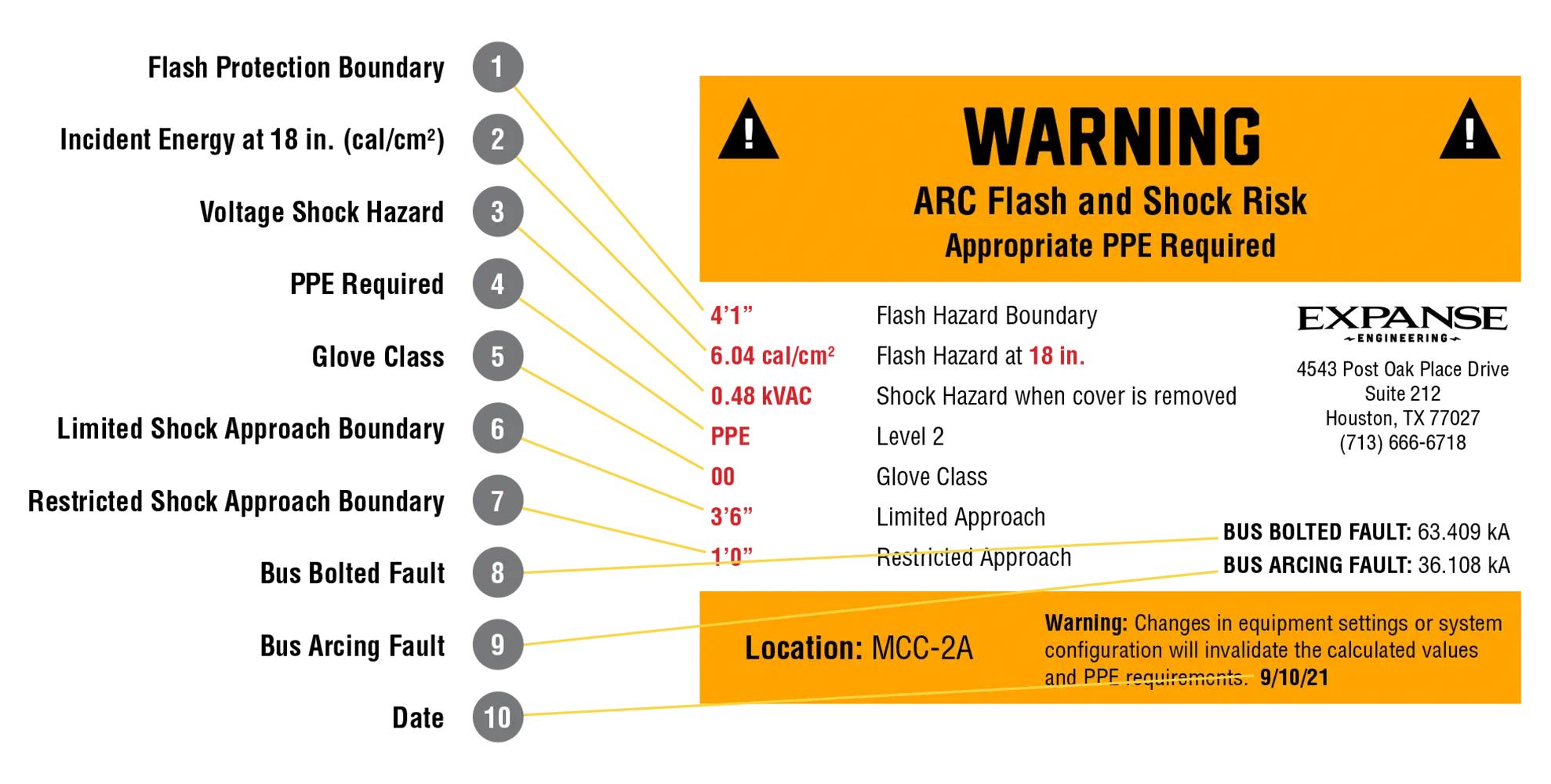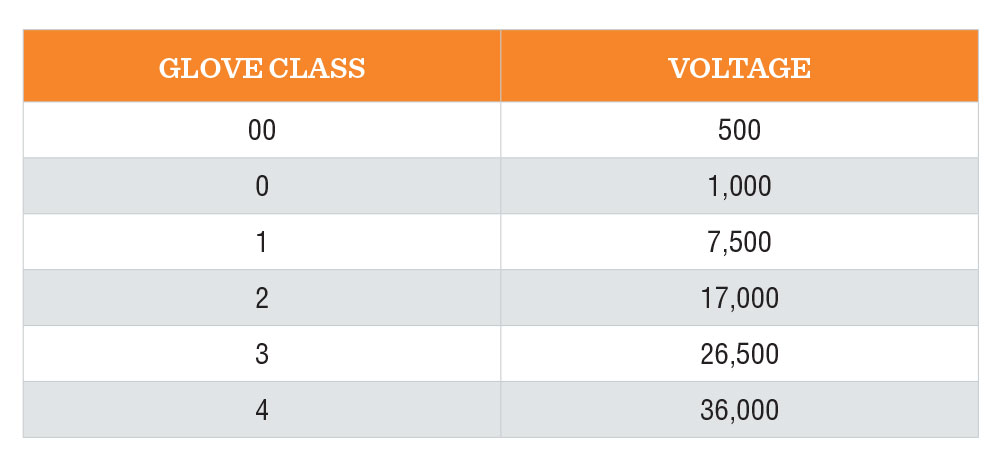ARC Flash Studies by Expanse Engineering Allow Our Clients to Comply with OSHA, Minimize Risk, and Keep Workers Safe
Changes to an electrical system can affect the level of ARC Flash energy. Internal changes such as adding new equipment or external changes, such as the Utility changing their transformer, can alter the level of ARC Flash energy.
What is an ARC Flash?
An ARC Flash is an electrical plasma that ignites the air between one exposed live conductor and another conductor or to ground. When an ARC Flash happens, the temperatures can reach up to 35,000 degrees Fahrenheit. This is four times the temperature on the surface of the sun. This can result in the destruction of equipment, fire, and injury.
What causes an ARC Flash?
An ARC Flash occurs when electrical clearances are reduced or compromised by deteriorating insulation or human error. The ARC Flash follows a conductive path between two hot (energized) wires or between a hot wire and ground.
Why is an ARC Flash study important?
OSHA requires that all “Non-Dwelling” facilities have an ARC Flash Hazard Analysis performed to determine:
- The ARC Flash Boundary
- The Level of PPE Required
- The Presence of a Flash Hazard
Electrical systems are dynamic and change over time. Internal changes, such as adding new equipment can affect the level of ARC Flash energy. A study must be updated every time the system changes. External changes, such as a utility changing transformers or changes at your utility’s closest sub-station can severely impact your level of ARC Flash energy. Without an ARC Flash study, you will not know the actual level of danger or the appropriate personal protective equipment (PPE) required for employees.
An ARC Flash study is essential to understand the actual level of danger and the appropriate personal protective equipment (PPE) required for employees. A study must be updated on any changes to the Electrical System.
How can I protect employees from ARC Flashes?
- Work while the system is de-energized
- Perform an ARC Flash calculation
- Document the findings
- Determine specifics of unsafe work locations
- Eliminate hazards through system changes or operational procedures such as modifying the circuit breaker and/or relay settings to reduce the ARC Flash hazards and installing ARC Flash relays
- Apply hazard labels describing required PPE and boundaries for equipment use
- Establish safe work practice procedures
Are the generic PPE recommendations of the National Fire Protection Association (NFPA) 70E sufficient?
Following NFPA 70E guidelines is highly recommended, however, the actual field conditions can be more hazardous than the NFPA 70E guidelines. An ARC Flash study can reveal equipment with elevated hazard levels. This will help you protect your employees.
The Expanse Advantage
- Performed Over 9,000 Power System Studies
- Experts in the Field
- Turnkey Services
- Project Management
- Complete Installation, Testing, Commissioning, Maintenance, and Support Services
Connect with an Expanse Expert
A Holistic Approach to Evaluating Your Electrical System
The engineers at Expanse Engineering have performed more than 9,000 power system studies. We take a holistic approach to evaluating your electrical system. It all starts with the power entering your facility. Our team collects utility information and details about your existing equipment and performs an ARC Flash calculation. Our team are experts in the use of the SKM Systems Analysis Program “PowerTools for Windows” (PTW) and Operational Technologies “ETAP” program. We enter the collected data into our client’s preferred calculation software (either PTW or ETAP).
Once complete, we:
- Document the findings and create one-line drawings
- Determine specifics of unsafe work locations
- Eliminate hazards through system changes or operational procedures
- Establish safe work practice procedures
- Apply hazard labels describing required PPE and boundaries for equipment use
Short Circuit Studies
NEC requires that equipment is rated higher than what’s available at each location. Our engineers determine the magnitude of the currents that flow during an electrical fault and compare these calculated values to the equipment ratings to ensure equipment operates without risk.
Protective Device Coordination Studies
Proper coordination ensures that breakers and fuses trip when they are supposed to in the event of an incident. It confirms the
downstream breakers trip first to prevent upstream breakers from being involved, thus minimizing any power outage.

Data Required to Be on ARC Flash Warning Labels
1. Flash Protection Boundary
This boundary is the closest that anyone may approach without the use of PPE. The available short circuit current, predicted fault duration, and voltage is all needed to determine the flash protection boundary. According to NFPA 70E 2015 Edition, there are three ways in which this boundary can be calculated:
- Simplified Table 130.7(C)(9), 130.7(C)(10)
- Analysis based on NFPA 70E Annex D
- Analysis based on IEEE 1584
2. Incident Energy at 18″ (cal/cm2)
This is the energy per unit area on a surface located 18 in. from the potential ARC source. The incident energy is measured in units of calories per square centimeter. Second-degree burns occur at an energy level of approximately 1.2 calories/cm2.
3. Voltage Shock Hazard
The hazard is based on the voltage of a system that is used to determine the glove rating when working on that system. NFPA 70E has a table for glove ratings based on the voltage shock hazard.
4. PPE Required
The Personal Protective Equipment required is dependent on the incident energy at every point a person may perform work on energized equipment. An electrical engineer or another qualified person should perform the calculations that determine the incident energy. The appropriate PPE should cover all parts of the body that may be exposed to an ARC Flash. This could include shoes, gloves, flame-resistant clothing, safety glasses, etc.
5. Glove Class
This class is based on the voltage level. The following Glove Class table comes from ASTM D 120-95.

6. Limited Shock Approach Boundary
This boundary may only be crossed by an “unqualified” person when they are accompanied by a “qualified” person.
7. Restricted Shock Approach Boundary
This boundary may only be crossed by a “qualified” person that uses adequate shock prevention equipment and techniques.
8. Bus Bolted Fault
Calculated short circuit current.
9. Bus Arcing Fault
The ARC fault calculations assume that there is a physical gap between conductors that was bridged by something resulting in the formation of an ARC. Once the ARC is formed and plasma is produced, the ARC current should closely approximate the calculated fault levels. The ARC Fault calculations are an approximation based upon research and testing similar to the short circuit analysis methods.
10. Date
NFPA requires that ARC Flash studies must be updated every 5 years. The date shows that the study is current and gives the timeline for the implementation of a new study.
